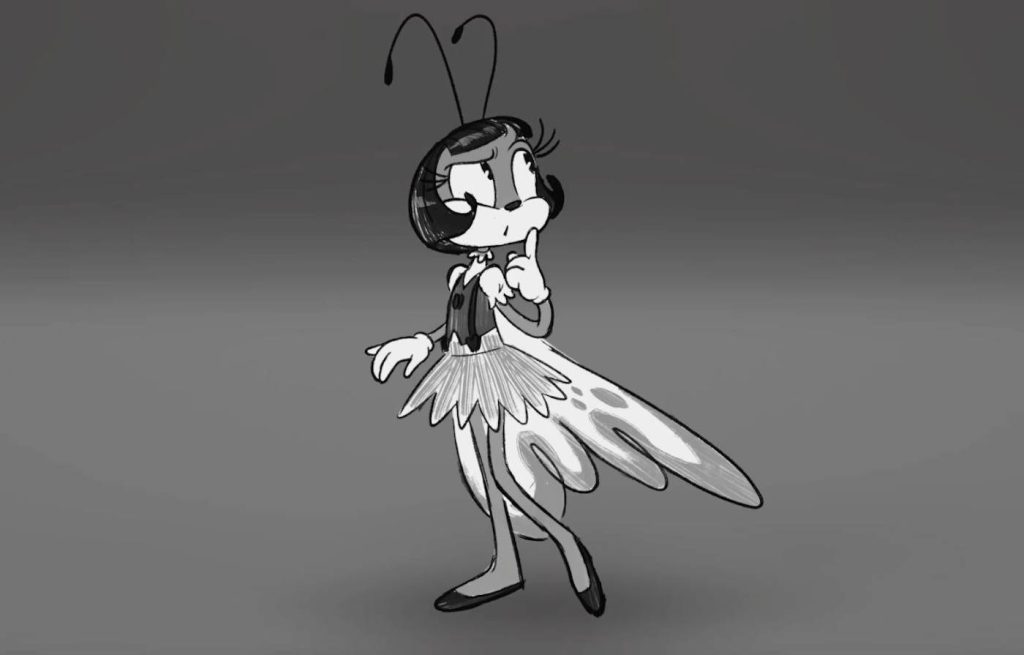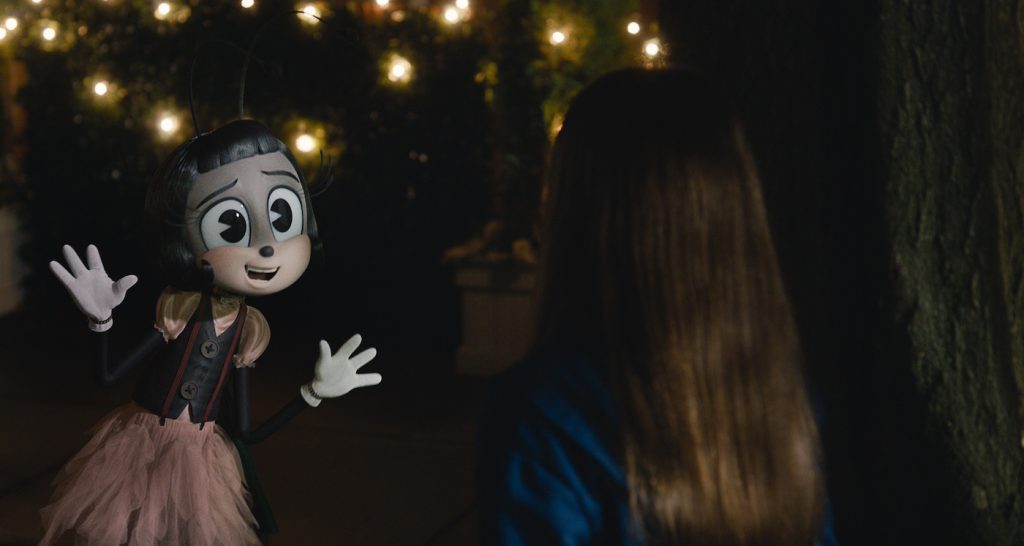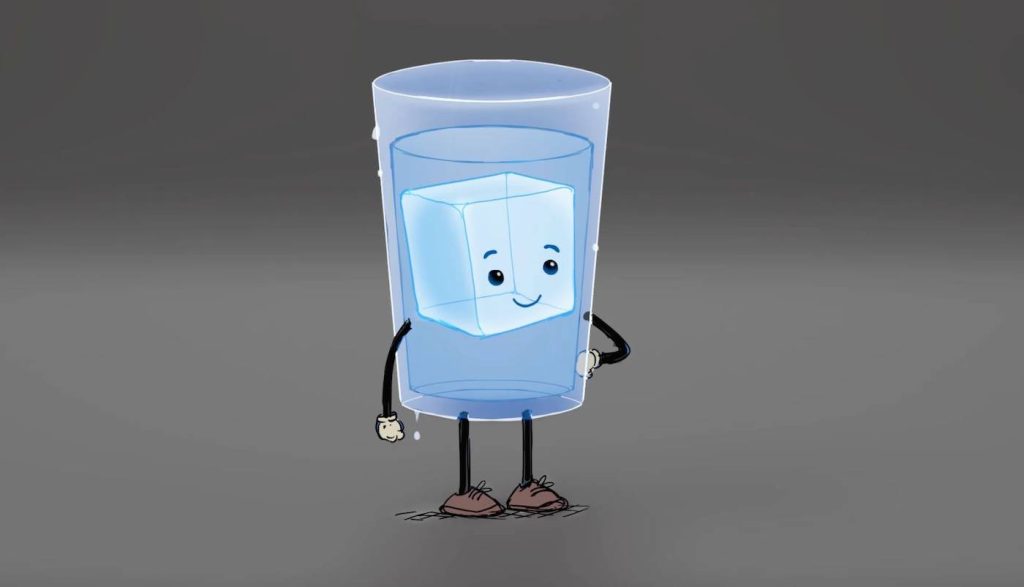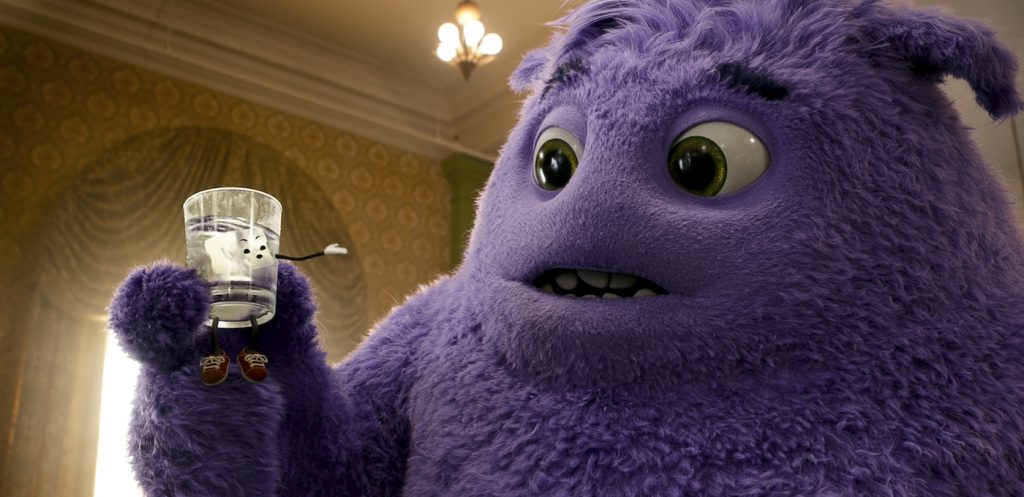How the Animation in John Krasinski’s “IF” Came to Live Seamlessly Among Live-Action
Written and directed by John Krasinski, IF is a fantastical inverse of Krasinski’s A Quiet Place and A Quiet Place Part II. A contemporary fairy-tale journey inspired by Krasinski’s own daughters, IF pairs live action and animation to bring us Bea (Cailey Fleming), a tween who learns she can see everyone else’s imaginary friends, and teams up with Cal (Ryan Reynolds), the only adult around who shares her superpower, to help them.
Being able to see this wild array of imaginary beings sounds delightful, but those who’ve been outgrown by their children are in troubled waters. Bea and Cal work to find new kids for a gaggle of adrift IFs, accompanied by an enormous purple furry friend named Blue (Steve Carell). Born as they are of children’s imaginations, no two IFs are alike — where Blue is tangibly huggable, Blossom (Phoebe Waller-Bridge) is a petite, Betty Boop-inspired butterfly. Opposite both is the IFs’ wise soul, a scruffy teddy bear named Lewis, voiced by the late Louis Gossett Jr. Given the level of interaction and emotional tension between the actors and the IFs, for the visual effects supervisor, Academy Award winner Chris Lawrence (Gravity, The Martian), animation supervisor Arslan Elver (Guardians of The Galaxy, Star Wars: The Force Awakens), and their team, the challenge was to support Krasinski as a live-action filmmaker while bringing an incredible stylistic range of animated characters to life.
The blend between the two worlds needed to be seamless. “Ultimately, our goal was for the audience to forget we’d done any work at all,” Lawrence said. On set, they used a proprietary iPad app to point around the action, showing versions of the IFs that the actors could use to get a visual sense of where these characters would eventually wind up in the final edit. Main character IFs like Blue and Blossom had stand-ins (Blue’s wore a hula hoop around his middle to mimic his proportions). While the film was still being shot, Lawrence and Elver took an unusual approach to the animation, grabbing key moments from set each day to animate a couple of key poses, show them to Krasinski, and get feedback. “What it meant was that the basic blocking of the digital characters was defined at the point where John was cutting the scenes. He was able to make editorial choices based on what the characters were doing and what Arslan had imbued them with,” Lawrence explained. This way of working, combined with Krasinski’s passion for the project, made for a highly collaborative, performance-focused approach. “John’s enthusiasm is literally contagious,” Elver said. “It was quite cool because you don’t often see someone get so excited about an animation test and call other people to show them.”
The team also went out of the box to achieve trickier characters, like Blossom. “How do you get from this antique idea that’s almost 100 years old,” Lawrence said of Blossom’s inspiration, Betty Boop, “to something that’s contemporary and appealing for a four-year-old today?” The team watched Fleabag to glean some of Waller-Bridge’s particular idiosyncrasies and charm, then wound up using a three-dimensional version of a two-dimensional animation technique as part of their approach to get the character right, drawing up a model sheet of all of Blossom’s expressions, seen from different angles. “We couldn’t rotate her head up too much, but other than that, we made it happen,” Elver said.


Though they looked to references as varied as Who Framed Roger Rabbit, ET, and Dark Crystal, Lawrence and Elver worked to strike a new balance between realism and anything too cartoon-like. “How do you imbue these characters with just enough detail, photographic realism, and nuance of articulation and expression so that you can have them live with live-action actors and have them all sit together sympathetically in a scene?” Lawrence said of the philosophical tack they took throughout. The answer was a handmade, frame-by-frame approach so that even the visuals of a talking ice cube in a glass of water (voiced by Bradley Cooper) hit the right emotional beats. The animation team added imperfections like barely perceptible scratches to their characters’ eyes and watched videos of the film’s all-star cast in the recording booth for inspiration. “We look at their facial expressions — what do they do with their eyes and eyebrows? It’s like picking up the right ingredients for cooking,” Elver said. Krasinski also guided some scenes by acting them out himself.


The final look of the film’s digital characters is a composite of the director’s vision, the actors’ performances, and the painstaking way each of these elements was interpreted by the animation team. “Great care and attention was our overall goal, to protect the human actors’ performances and the animated performances, to allow them to live and evolve together in a scene, and to support John and his vision in directing that,” Lawrence said. “We used that to guide every decision we made on the film. I’m too close to it, but my four-year-old loved it, so I’m really happy.”
For more films and series from Paramount and Paramount+, check out these stories:
“A Quiet Place: Day One” Trailer Unleashes the Alien Scourge on an Unsuspecting NYC
Chris Hemsworth, Scarlett Johannsson & Brian Tyree Henry Highlight First “Transformers One” Trailer
Pamela Anderson Set to Star in “Naked Gun” Remake Opposite Liam Neeson
Featured image: L-R, Christopher Meloni (Cosmo), Ryan Reynolds (Cal), Cailey Fleming (Bea) and Louis Gossett Jr. (Lewis) star in Paramount Pictures’ “IF.”



